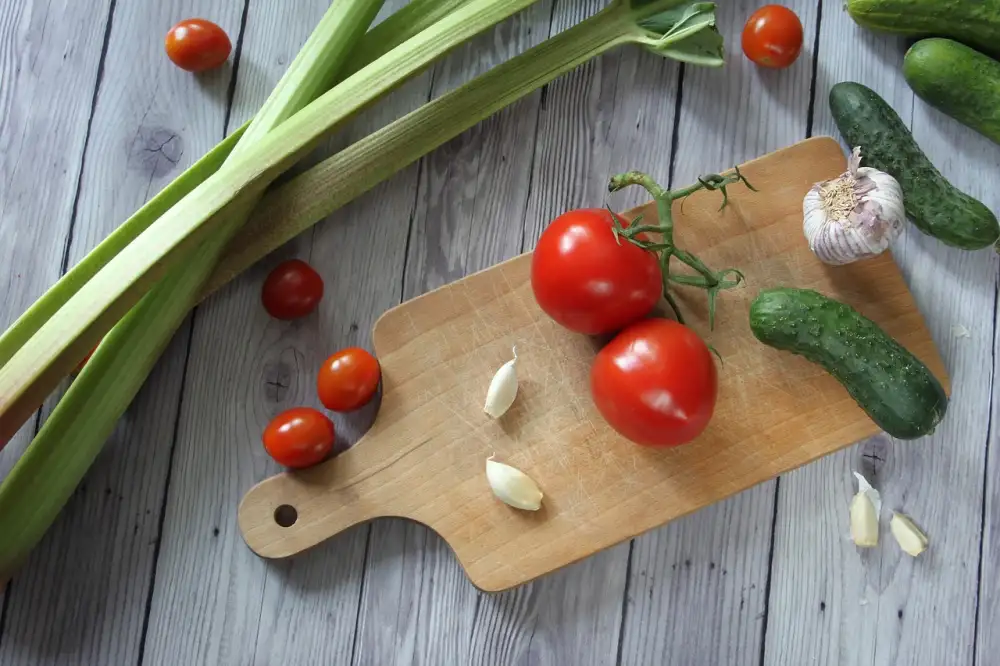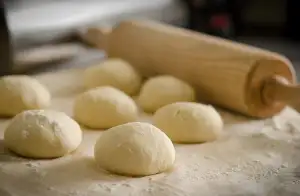Master the Art of Cooking Rhubarb: A Delectable Recipe Guide

Rhubarb, a vegetable often mistaken for a fruit due to its use in desserts, is prized for its vibrant pink to reddish stalks and unique tart flavor. Belonging to the buckwheat family, rhubarb is rich in vitamins K and C, as well as dietary fiber. It has been cultivated for centuries, with records of its culinary use dating back to ancient China. Rhubarb is commonly harvested in the spring and early summer months when the stalks are at their peak tenderness. Its versatility allows it to be used in both sweet and savory dishes, making it a favorite ingredient among chefs and home cooks alike.
Selecting Fresh Rhubarb
When selecting fresh rhubarb, look for firm and crisp stalks with a bright color. Avoid limp or wilted stalks as they indicate age and loss of freshness. The color can vary from light pink to deep red, depending on the variety, so choose based on personal preference. Larger stalks tend to be more fibrous, so opt for medium-sized ones for better texture. It's best to buy rhubarb in season (spring to early summer) for optimal flavor and quality.
Washing and Preparing Rhubarb
Washing and preparing rhubarb is essential to ensure a delicious end result. Start by rinsing the stalks under cold water to remove any dirt or debris. Trim off the leaves as they are toxic and should not be consumed. Next, use a sharp knife to trim off the ends of the stalks and peel away any tough strings. Depending on your recipe, cut the rhubarb into slices or chunks as directed. Remember that rhubarb can vary in tartness, so taste a small piece before cooking to adjust sugar levels if needed. Properly preparing rhubarb will enhance its natural flavors in your dishes.
Cooking Methods for Rhubarb
When it comes to cooking rhubarb, there are several methods you can use to bring out its unique flavor and texture. One popular method is stewing rhubarb with sugar and a little water until it breaks down into a soft, tangy compote. You can also roast rhubarb in the oven with some sugar to caramelize its natural sugars and enhance its sweetness. For a quick and easy option, you can sauté rhubarb in a pan with butter and sugar for a simple yet delicious side dish or topping for desserts. Lastly, you can also grill rhubarb to add a smoky flavor that pairs well with savory dishes or as a unique addition to salads. Experiment with these cooking methods to discover your favorite way to enjoy the versatile rhubarb in your culinary creations.
Sweet Rhubarb Recipes
Rhubarb is a versatile ingredient that shines in sweet dishes, adding a delightful tangy flavor. One classic way to enjoy rhubarb is in a traditional rhubarb crumble. Simply mix chopped rhubarb with sugar and a hint of cinnamon, then top with a buttery crumble made from flour, oats, and brown sugar. Bake until the topping is golden brown and the rhubarb is tender.
For a refreshing treat on a hot day, try making a rhubarb sorbet. Cook chopped rhubarb with sugar and water until soft, then blend until smooth. Churn the mixture in an ice cream maker for a cool and tangy dessert option.
Another popular sweet recipe is rhubarb compote, which can be used as a topping for yogurt, ice cream, or pancakes. Simmer diced rhubarb with sugar and orange zest until it forms a thick sauce. The compote can be stored in the refrigerator for up to a week.
These sweet rhubarb recipes are perfect for showcasing the unique flavor of this spring vegetable in all its delicious glory.
Savory Rhubarb Recipes
**Savory Rhubarb Recipes:**
Rhubarb is not just for sweet dishes; its unique tartness can also enhance savory recipes. One popular way to use rhubarb in savory cooking is by making a tangy rhubarb chutney. To prepare this, combine chopped rhubarb with onions, ginger, sugar, vinegar, and spices like cinnamon and cloves. Simmer the mixture until the rhubarb breaks down and the flavors meld together to create a delicious condiment perfect for serving with grilled meats or cheese platters.
Another savory option is to roast rhubarb with vegetables like carrots and parsnips. Toss the chopped vegetables and rhubarb in olive oil, salt, and pepper before roasting them in the oven until caramelized and tender. The roasted rhubarb adds a delightful tanginess to the dish that pairs well with the sweetness of the root vegetables.
For a more adventurous twist, try incorporating rhubarb into a savory sauce for dishes like pork or chicken. Cook down rhubarb with onions, garlic, broth, and herbs until it forms a thick sauce that can be spooned over your protein of choice.
Experimenting with savory rhubarb recipes can introduce a new dimension of flavor to your cooking repertoire. The tartness of rhubarb adds complexity and brightness to savory dishes that will surprise and delight your taste buds.
Storing Leftover Cooked Rhubarb
Storing leftover cooked rhubarb is essential to maintain its freshness and flavor. Once cooled to room temperature, transfer the rhubarb into an airtight container or a resealable bag. Store it in the refrigerator for up to 5 days. If you have a larger batch, consider freezing the cooked rhubarb by placing it in freezer-safe containers or bags. Frozen cooked rhubarb can last for up to 3 months. Thaw it in the refrigerator before using it in recipes to preserve its texture and taste.
Tips and Tricks for Cooking with Rhubarb
When cooking with rhubarb, it's essential to remember a few key tips and tricks to ensure the best results. Firstly, always remove and discard the leaves as they contain oxalic acid, which can be toxic if consumed in large quantities. Secondly, when combining rhubarb with sugar in recipes, allow it to sit for about 20 minutes before cooking to help reduce its natural tartness. Additionally, consider adding a pinch of salt or citrus zest to enhance the flavor profile of your dish. Lastly, be mindful not to overcook rhubarb as it can quickly turn mushy – aim for a tender yet slightly firm texture for optimal results in your culinary creations.
In conclusion, mastering the art of cooking with rhubarb opens up a world of culinary possibilities. Whether you prefer sweet or savory dishes, rhubarb can add a unique and tangy flavor to your recipes. Remember to select fresh rhubarb, wash and prepare it properly, and experiment with different cooking methods to bring out its best flavors.
When serving rhubarb dishes, consider pairing them with creamy vanilla ice cream or Greek yogurt to balance out the tartness. Garnish desserts with a sprinkle of chopped pistachios or almonds for added texture. For savory dishes, rhubarb pairs well with roasted meats such as pork or chicken.
Get creative in the kitchen and explore the versatility of rhubarb in your cooking. From pies and crumbles to chutneys and sauces, there are endless ways to incorporate this vibrant ingredient into your meals. So go ahead, embrace the tartness of rhubarb and delight your taste buds with these delectable recipes!
Published: 29. 03. 2024
Category: Recipes



